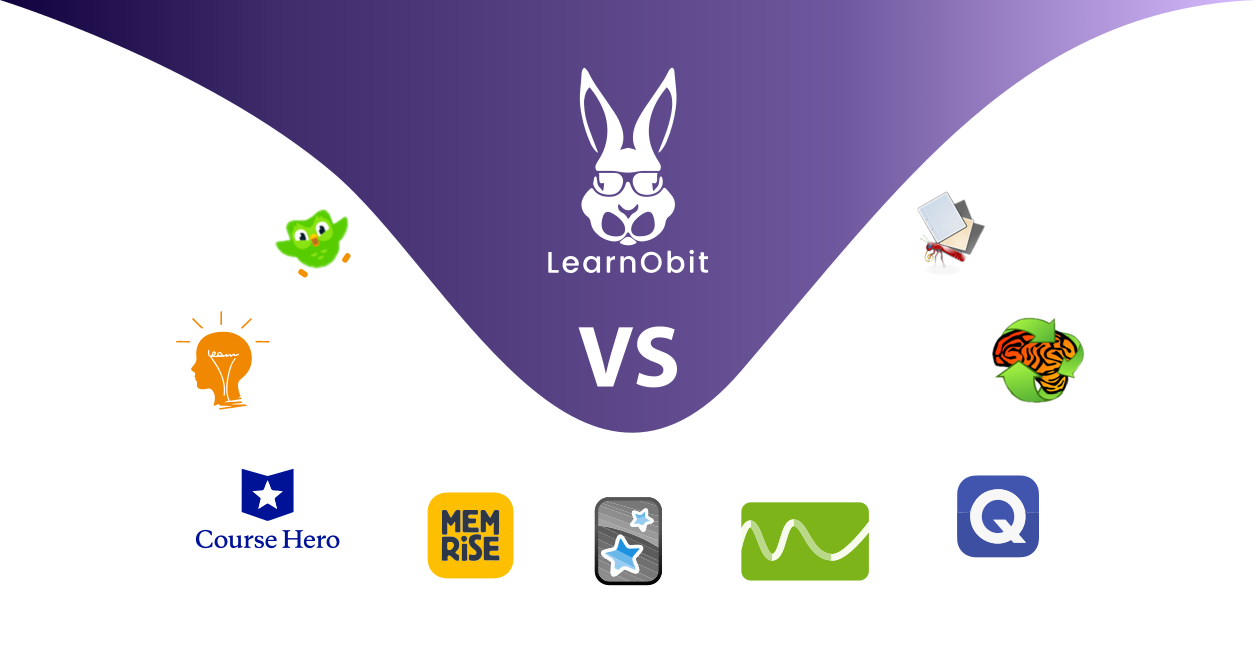What is the difference between it and Anki?

Seeing as LearnObit uses Spaced Repetition (SR), there is a question that often arises: What separates it from conventional SR Software (SRS), such as Anki?
Let’s start with what binds them first. LearnObit – and likewise all SRS, including Anki – are tools that aim to improve the memorization process. The goal is to remember information over an extended period of time and doing so with minimal effort.
The single most important contribution SRS makes to learning is that memorization is no longer a haphazard process, in which previously internalized knowledge gets lost simply by chance. Recognizing this is not merely a means to study more conveniently, it is now a choice.
However, while Anki (representative of traditional SRS) is very efficient at supporting the learning of pair items, it lacks a system that offers contextual understanding. This means that Anki will help you with remembering the answer to one question, it won’t tell you how what role that particular piece of information plays in the grand scheme of things.
This is where LearnObit comes in. It employs a mixture of the usual Spaced Repetition algorithm and combines it with a dynamic chunking algorithm, so as to disassemble and reassemble the data of any given topic, thereby facilitating the memorization of the subject as a whole. This simple solution addresses major problems that still persist with SR to this day.
So, to recap: Anki is designed to help memorize pair items (one question, one answer), while LearnObit aims to memorize entire subjects – this is the key difference, which defines LearnObit not merely as an add-on for conventional SRS, but a new software entirely.
- Software like Anki usually make use of flashcards. While this approach is useful, if you are aiming to associate to facts with each other (i.e. a country and its capital), it fails to help in the understanding of an entire subject. This is because they consist of hierarchies and relationships between information. Facts in a vacuum are rarely of any use, as they don’t tell us anything about the organizational scheme.
To counteract this, LearnObit utilizes a wide range of structures and diagrams to map out any given topic in as much detail as needed to provide effective structural learning. This ensures one does not simply become a facts-machine; on the contrary, it ensures a grasp of the subject matter in its entirety.
- Moreover, the volume contained in one chunk should depend on the knowledge of the specific person. There is absolutely no point in over- or underwhelming the learner with information. However, flashcards run into exactly this problem: They are static, one can’t change the amount of data contained in one. So, either one will cram high quantities of information into one card, or one will be forced to create a near infinite number of flashcards.
LearnObit does not use flashcards at all. It calculates the level of knowledge that the learning person possesses and accumulates data for one bundle based on its results. Whenever the chunk is studied, the app will connect the chunk with other similar information, so as to constantly help with remembering the organizational system.
- Dwelling on the topic of flashcards for a moment, another problem arises when inspecting their method of operation. They promise to help with memorizing the difficult parts and not wasting time with easy facts. In actuality, however, users end up spending most of their time on actually creating the flashcards in the first place. LearnObit circumvents this by making the process of data input the first act on the road of understanding, rather than a laborious activity that is of no use at all.
- Programs like Anki further lack in importing subtle contents, or tacit knowledge, such as tiny tips, know-hows, and understandings. Because tacit knowledge is not easily communicated through the question-answer paradigm, learning it by only employing flashcards is nearly impossible. This is because whenever users enter anything of substance into Anki, they are forced to add context concerning that piece of information. In contrast, LearnObit automatically contextualizes your input, enabling the use of personal context.
- Furthermore, flashcards can become difficult to manage when the context provided is not sufficient for the software to know where to "store" it. This creates unnecessary disorganization. LearnObit, on the other hand, allows one to digitize one’s knowledge and let the software automatically structure the data inserted, thereby allowing the explicit deletion or regaining of information.
- Everybody gets distracted from time to time. If one finds oneself too busy for reviewing Anki’s flashcards, they will quickly aggregate and eventually become nearly unmanageable. The issue of unconnected flashcards acts as a catalyst, making it all the harder to stay in charge of the data previously inserted into the app. At some point, this condition will inevitably lead to frustration and might even cause some users to quit entirely.
Contrast this with the tree structure employed by LearnObit. By allowing users to select users what they want to study – based on the time they have at their disposal – content is kept manageable. Moreover, this approach keeps it fairly easy to catch up with information that has not been reviewed in a while. What this means is that if one chooses to neglect retention provided by using LearnObit for an extended amount of time, one can easily get back into the process and regain that expertise – even if a year has passed. Users can get their memory back in shape at any given period of their life.
The unique combination of Spaced Repetition and the use of structures and diagrams is what sets LearnObit apart from all SRS that came before it. The ability to memorize subjects not only by their facts, but also understanding hierarchies and context is what has been missing so far and in turn stalling the widespread adoption of SR as a learning method.


